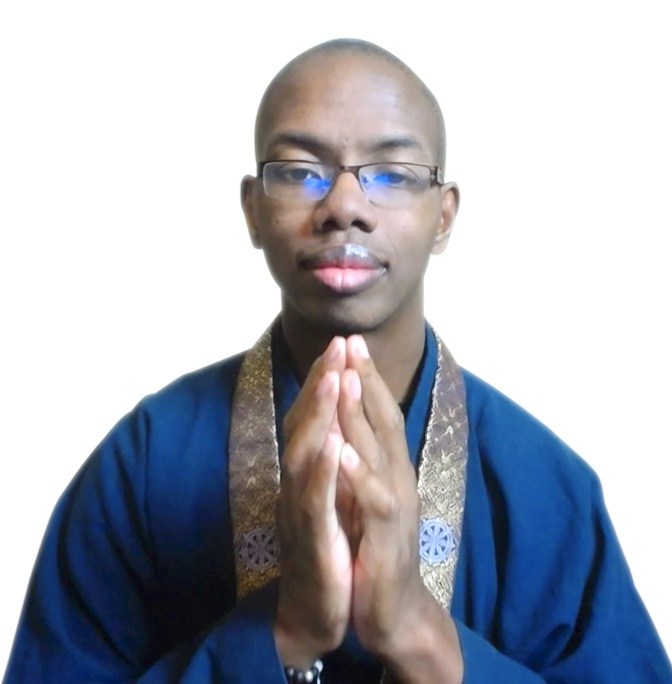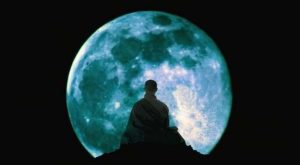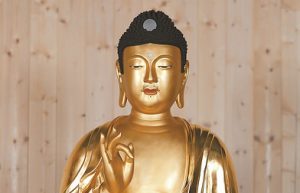
Non-duality is one of the most misunderstood and misrepresented teachings in Western Buddhism. The way it’s generally understood is that our everyday life with its messy thoughts, feelings, and ordinary responsibilities is relative truth.
Relative truth is important as that’s what allows us to function in daily life, but it’s not the whole picture. Thus, it can best be seen as a necessary evil.
If we want to see the whole picture and step into non-dual awareness, we must experience ultimate truth, which is beyond words, images, and categories. This is also known as emptiness.
Put simply, duality is found in the relative truth of ordinary life. And non-duality is found in the ultimate truth of emptiness. Thus, our project as Buddhists is to train hard; engaging in chanting, meditation, sutra study, and prostrations so that we can escape relative truth and live in ultimate truth.
A careful reading of the previous paragraphs, however, will show why this thinking is wrongheaded.
How can we possibly experience non-dual awareness if we cut our lives in half, calling some things relative truth and other things ultimate truth? It’s like saying that we want to become clean by covering ourselves in mud.
Also, it doesn’t match the example we see from our Buddhist ancestors: if we look at the historical Buddha, for example, he didn’t sit blissed out under the Bodhi tree after he realized enlightenment.
Instead, he engaged passionately with the relative truth of daily life, teaching the Dharma to everyone he met until he died 45 years later. We can learn how the Buddha understood the relationship between relative truth and ultimate truth by studying the following passage:
Also know by this form of explanation that those who say, “The character of the compounded and the character of the ultimate are not different,” and those who say, “They are different,” are improperly oriented; their orientation is incorrect.
Suvisuddhamati, for instance, it is not easy to designate the whiteness of a conch as being a character that is different from the conch or as being a character that is not different from it. As it is with the whiteness of a conch, so it is with the yellowness of gold.
(The Samdhinirmocana Mahayana Sutra)
In this passage, the Buddha is pointing out that it is wrong to separate relative and ultimate truth into separate categories. However, it is also wrong to say that they are the same. Rather, we must understand that they are inextricably tied together in ways that we’ll never fully understand.
In the same way, we cannot separate the whiteness of the conch shell from the shell itself. We cannot separate the relative truth of the world from the ultimate truth that underlies it. Thus, we don’t need to do anything special to experience non-duality.
Put simply, our ordinary, everyday life is non-duality.
Of course, this begs the question, if we are already experiencing non-duality, what is the purpose of Buddhist training?
Sticking with the example of the conch shell. It is true that we cannot see the whiteness of the shell without seeing the shell itself if we are holding it in our hand. However, if we place the conch on a sandy beach, it will inevitably be covered up.
A small amount of sand will obscure it enough that we can see the color, but the shape of the shell is hidden from us, so we don’t know exactly what we are looking at. A lot of sand might cover up the conch completely, so that we don’t even know that it’s there.
It is only by removing the sand that we are able to see the relative truth of the shell’s color and the absolute truth of the shell’s nature clearly.
As humans, our minds are filled with the “sand” of greed, anger, and ignorance. These defilements obscure our ability to see both relative and absolute truth in the same way that sand might stop us from seeing shells at the beach.
The Lotus Sutra describes this state of being by telling the story of a man who walks around with a precious pearl in his pocket without knowing it is there. He only finds it after running into a kind friend who tells him where the pearl is located.
The Buddha is the friend in the story and the Dharma teachings are the instructions he gave to help us find the “pearl” of non-duality. In other words, it is through the skillful use and understanding of the relative that we become fully aware of the absolute.
That’s why the Four Noble Truths, the Noble Eightfold Path, and the Six Perfections are so important. They are a literal instruction manual, designed to help us enter into non-dual awareness.
Namu Amida Butsu
References
Powers, John. 1994. Wisdom of Buddha: The Samdhinirmocana Sutra. Berkely, CA: Dharma Publishing.
Related features from BDG
The Non-duality of Diversity: Dialogue among Religious Traditions
Vienna in the Silicon Pure Land, Part 2: Navigating the Wild Wired West
Duality, Dharma, and the Brain
The Ox Herder’s Diary












